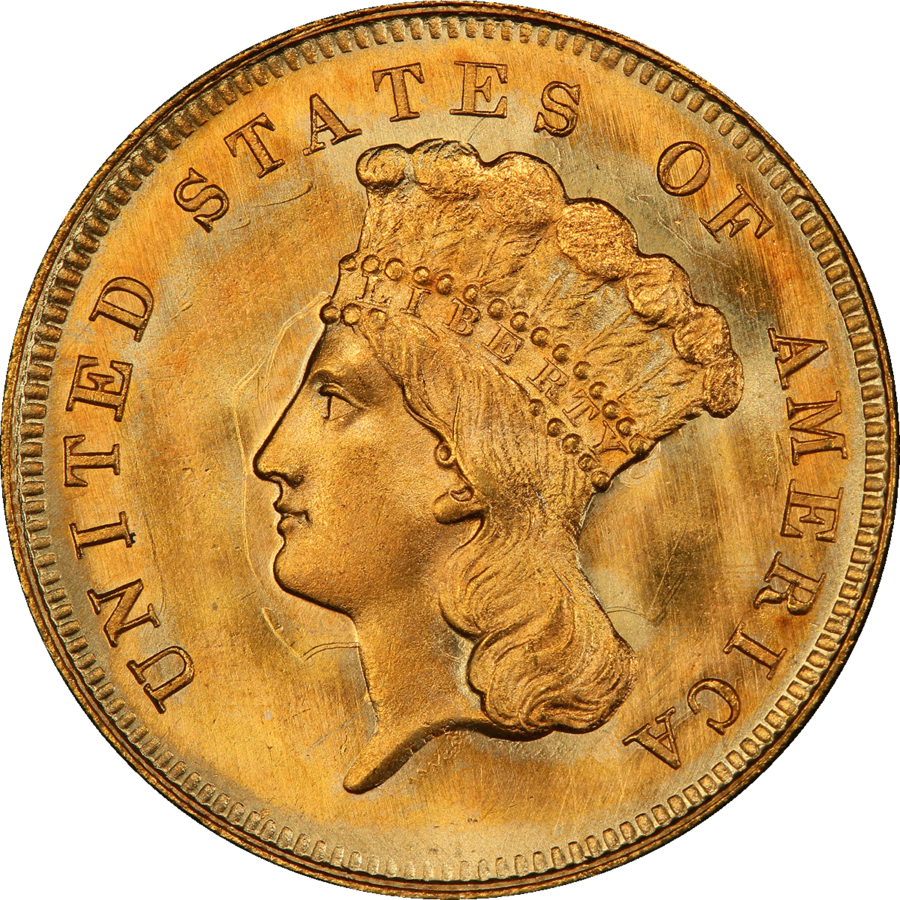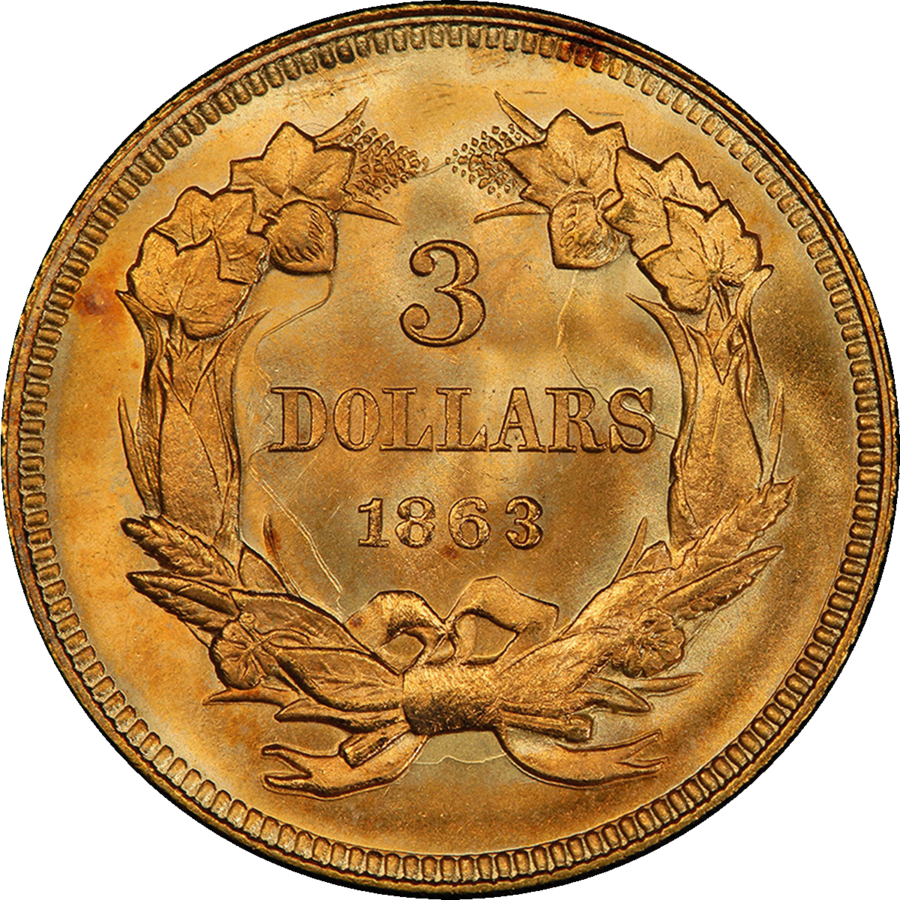Superb Civil War Longacre Gold
James B. Longacre was named Chief Engraver of the United States Mint at Philadelphia in September 1844, and remained in that position for nearly a quarter century until his death in January 1869. Longacre’s tenure coincided with a period of significant change through much of America’s coinage, and included new designs for Flying Eagle and Indian Cents, Shield Two Cent and Five Cent coins, Three Cents both Nickel and Silver, the ‘Cereal Wreath’ reverse employed for Liberty Seated Half Dimes and Dimes, Gold Dollars, Gold Double Eagles, and the Indian Gold Three Dollars.
The highest recorded mintage for the Indian Three Dollar series is for the first coins of the denomination struck in Philadelphia in 1854, followed in quantity by 1878, the last year in which any significant number of the denomination was struck for circulation. Ultra low mintages are the rule throughout most of the series, although survival rates can vary. Mintage of the Three Dollar denomination in 1863 follows a pattern similar to most other gold coins struck in that year, as all gold denominations show reduced mintage figures with the exception of Double Eagles, and a bump up in production of half eagles at the San Francisco Mint.
Of the 5,000 ‘business strike’ Indian Threes struck in 1863, there are maybe a dozen survivors at the Gem level or better. Remarkably, a nearly identical pair of 1863 Threes survive in Superb Gem condition, topping the condition census and representing two of the four coins for the entire type currently graded MS68/68+ by PCGS along with a single example each of 1854 and 1867. Additionally, these two 1863s are only two MS68 Indian Threes of any date listed in the CAC Census.
These two exceptional 1863 Indian Threes are nearly a perfect match in both color and die state, suggesting that they share a prior source that has now been forgotten. The Pogue Family coin offered here was held by the ‘Great Lakes’ Collection until October 2005, when the entire collection was purchased by the Pogues in a private transaction via Larry Hanks. The other was owned by David Akers, among his personal coins, and was last sold publicly by Heritage Auctions in January 2014, lot 5386 @ $211,500. At that time, there were no 1863s graded higher than MS67 by PCGS, and NGC showed the same population of two coins graded MS68, as they had since before September 1999. The ‘Great Lakes’-Pogue Family coin then was regraded to MS68 by PCGS, and sold at the fire sale called Pogue III at $123,375 in February 2016, the worst of the Pogue sales, and was noted as the only PCGS MS68 at that time. Thereafter, the David Akers MS67 became a MS68, and later was bumped again to MS68+. However, these two coins are identical twins in color, die state, marks, and grade. So, whatever grade we assign, they are equals at the top of the condition census for 1863 Indian Threes, and both among the finest examples of the type. And with two price extremes, the real number falls somewhere in the middle between the 2014 auction price of $211,500 and the 2016 auction price of $123,375.
PCGS #32219423
Provenance
‘Great Lakes’ Collection; Larry Hanks, privately, October 2005 to Brent Pogue as PCGS MS67; Pogue Family Collection; Stack’s Bowers ‘D. Brent Pogue, Part III’, February 2016, lot 3104 @ $123,375 as PCGS MS68; ‘The Type Set’ by Oliver and Lish Jung.


